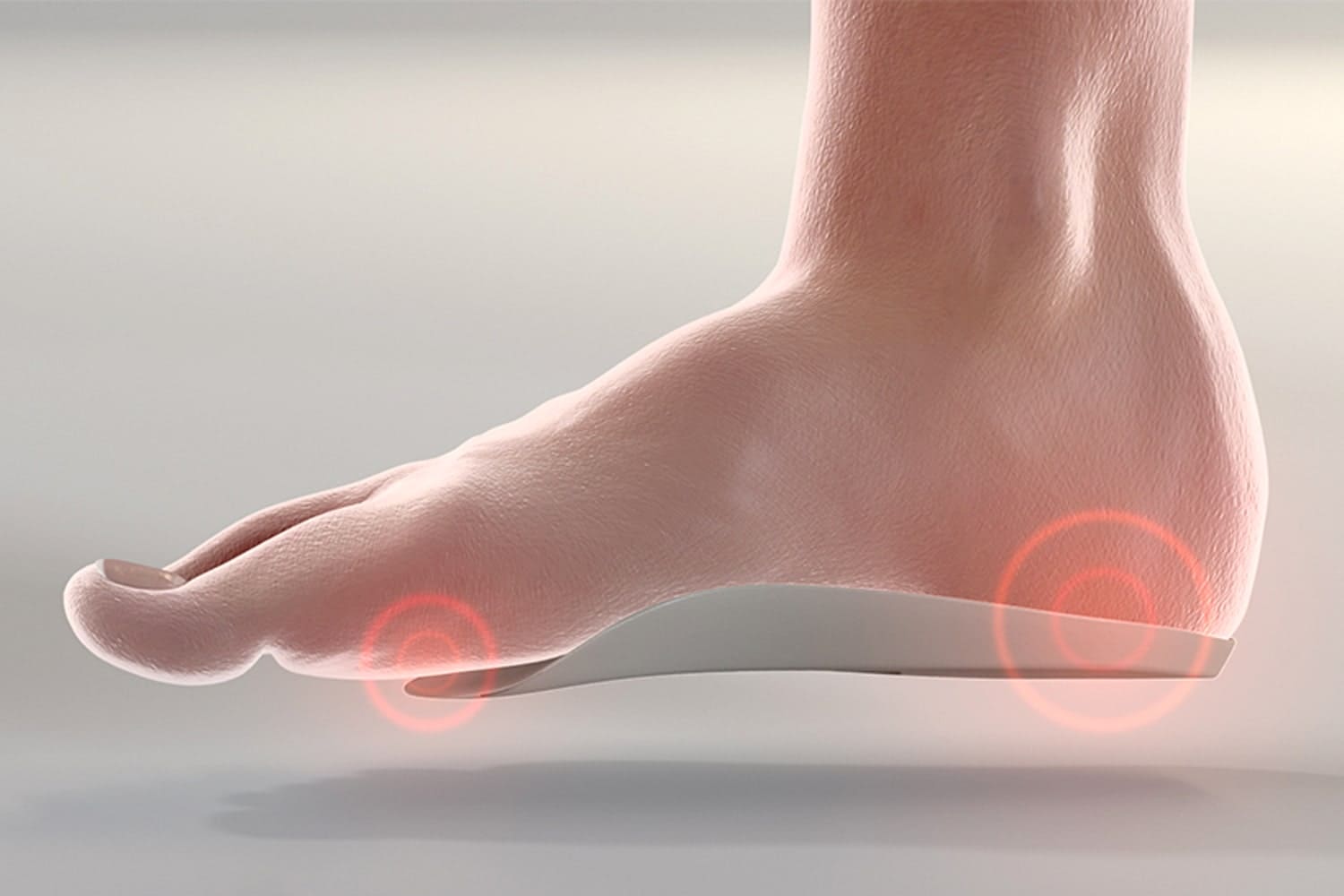Are your arches aching? Discover supportive tips to alleviate discomfort and promote foot health in this comprehensive guide.
Introduction
Do you find yourself wincing with each step due to aching arches? You’re not alone. Foot discomfort, especially in the arches, can significantly impact your daily life. Whether it’s from standing for extended periods, wearing improper footwear, or underlying medical conditions, addressing the issue is crucial for overall well-being. In this article, we’ll delve into various supportive tips and techniques to ease arch pain and enhance foot comfort.
Table of Contents
Understanding Aching Arches
Feeling discomfort in your arches can range from mild soreness to sharp pain, making every step a challenge. It’s essential to understand the potential causes behind this discomfort to effectively address the issue. From overuse injuries to structural abnormalities, several factors can contribute to aching arches.
Exploring Common Causes
Aching arches can stem from various factors, including:
- Overuse: Engaging in activities that put repetitive stress on the feet, such as running or standing for prolonged periods, can strain the arches.
- Improper Footwear: Wearing shoes with inadequate support or improper fit can exacerbate arch pain.
- Flat Feet: Individuals with flat feet may experience arch discomfort due to lack of natural arch support.
- Plantar Fasciitis: Inflammation of the plantar fascia, a thick band of tissue that supports the arch, can lead to intense arch pain.
- Foot Injuries: Trauma or injuries to the foot, such as strains or fractures, can result in arch discomfort.

Aching Arches? Try These Supportive Tips!
Experiencing discomfort in your arches can disrupt your daily activities and diminish your quality of life. However, incorporating supportive measures into your routine can help alleviate pain and promote foot health. Here are some effective tips to try:
Choose Supportive Footwear
- Arch Support: Opt for shoes with built-in arch support to help distribute pressure evenly across the foot and relieve strain on the arches.
- Cushioning: Look for shoes with ample cushioning in the midsole and heel areas to absorb shock and provide added comfort during walking or standing.
- Comfortable Fit: Ensure that the shoes fit properly and allow for natural movement of the foot. Avoid shoes that are too tight or narrow, as they can cause discomfort and exacerbate arch pain.
- Breathability: Choose shoes made from breathable materials to help prevent excessive sweating and reduce the risk of fungal infections or odors.
- Stability: Consider shoes with a sturdy sole and supportive heel counter to promote stability and prevent overpronation, which can contribute to arch pain.
Incorporate Arch Support Inserts
- Arch Height: Choose inserts that match the natural height of your arches. Inserts are available in various arch heights, including low, medium, and high, to accommodate different foot shapes and arch profiles.
- Material: Look for inserts made from durable materials that provide adequate cushioning and support without compromising comfort. Materials such as memory foam, gel, or firm rubber can effectively support the arches while absorbing shock during walking or standing.
- Customization: Some arch support inserts offer customizable features, allowing you to adjust the level of support and cushioning based on your specific needs. Customizable inserts may include removable pads or adjustable arch support straps for personalized comfort.
- Compatibility: Ensure that the inserts are compatible with your existing footwear. Most arch support inserts are designed to fit into standard shoes, but specialized inserts may be required for certain types of footwear, such as athletic shoes or dress shoes.

Practice Foot Stretches and Exercises
Incorporating regular foot stretches and exercises into your daily routine can help improve the flexibility, strength, and stability of your arches, reducing discomfort and promoting overall foot health. Here are some effective stretches and exercises to try:
Toe Curls
- How to do it: Sit comfortably with your feet flat on the floor. Slowly curl your toes downward, gripping the floor with your toes. Hold for a few seconds, then release. Repeat 10-15 times.
- Benefits: Toe curls help strengthen the muscles in your toes and the bottom of your feet, improving overall foot stability and arch support.
Arch Lifts
- How to do it: Stand barefoot with your feet hip-width apart. Lift your arches by pressing your toes into the ground and lifting the inner edge of your foot. Hold for a few seconds, then release. Repeat 10-15 times.
- Benefits: Arch lifts target the muscles along the arch of your foot, helping to improve arch strength and stability.
Calf Stretches
- How to do it: Stand facing a wall with your hands resting against it for support. Step one foot back and bend the front knee, keeping the back leg straight. Lean forward slightly until you feel a stretch in the calf of the back leg. Hold for 20-30 seconds, then switch sides.
- Benefits: Calf stretches help improve flexibility in the calf muscles and Achilles tendon, which can alleviate tension and pressure on the arches.

Maintain a Healthy Weight
Balanced Diet
- Eat a variety of nutrient-rich foods: Incorporate plenty of fruits, vegetables, lean proteins, whole grains, and healthy fats into your diet. Avoid excessive consumption of processed foods, sugary snacks, and high-calorie beverages.
- Monitor portion sizes: Be mindful of portion sizes to avoid overeating. Use smaller plates, measure serving sizes, and pay attention to hunger and fullness cues to prevent overindulging.
Regular Exercise
- Engage in regular physical activity: Aim for at least 150 minutes of moderate-intensity aerobic exercise or 75 minutes of vigorous-intensity exercise per week. Activities such as walking, swimming, cycling, or dancing can help burn calories and maintain a healthy weight.
- Incorporate strength training: Include strength training exercises at least two days per week to build muscle mass and boost metabolism. Focus on exercises that target major muscle groups, such as squats, lunges, push-ups, and weightlifting.
Hydration
- Stay hydrated: Drink plenty of water throughout the day to support metabolism, regulate appetite, and maintain overall health. Aim for at least eight glasses of water per day, and limit consumption of sugary drinks and alcohol.
Sleep
- Get adequate sleep: Aim for 7-9 hours of quality sleep per night to support overall health and weight management. Lack of sleep can disrupt hormone levels related to appetite and metabolism, leading to weight gain.
Stress Management
- Manage stress effectively: Practice stress-reducing techniques such as meditation, deep breathing exercises, yoga, or mindfulness to prevent emotional eating and promote healthy habits.
Rest and Ice
When experiencing acute arch pain, giving your feet time to rest and applying ice can help alleviate discomfort and promote healing. Here’s how to effectively incorporate rest and ice therapy into your routine:
Rest
- Reduce weight-bearing activities: Limit activities that put strain on your feet, such as standing for prolonged periods or engaging in high-impact exercises. Instead, prioritize rest and give your feet time to recover.
- Elevate your feet: When resting, elevate your feet above heart level to reduce swelling and improve circulation. Use pillows or a footstool to support your feet while sitting or lying down.
Ice Therapy
- Apply ice packs: Place a cold pack or a bag of frozen peas wrapped in a thin towel on the affected area for 15-20 minutes at a time. Repeat every 2-3 hours, especially during the first 48 hours after experiencing pain or injury.
- Use ice massage: Fill a paper cup with water and freeze it. Peel away the top of the cup to expose the ice, then gently massage the affected area in circular motions for 5-10 minutes. Ice massage helps reduce inflammation and numb the area for pain relief.
Precautions
- Protect your skin: Always wrap ice packs or ice cubes in a thin towel or cloth to prevent direct contact with the skin, which can cause frostbite or damage.
- Limit ice therapy: Avoid applying ice for too long, as prolonged exposure can lead to tissue damage or frostbite. Stick to the recommended duration and allow your skin to warm up between ice sessions.
Rest and ice therapy can help alleviate acute arch pain, reduce inflammation, and promote faster healing. Combine these strategies with other supportive measures such as wearing proper footwear, stretching exercises, and seeking professional treatment if needed to effectively manage arch discomfort and maintain foot health.

Seek Professional Treatment
If conservative measures fail to alleviate your arch pain or if you experience persistent or severe discomfort, it’s essential to seek professional medical evaluation and treatment. A podiatrist or orthopedic specialist can provide expert guidance and recommend appropriate interventions to address your specific condition. Here are steps to take when seeking professional treatment:
Consultation
- Schedule an appointment: Contact a qualified healthcare provider specializing in foot and ankle care, such as a podiatrist or orthopedic surgeon, to schedule a consultation.
- Describe your symptoms: During the appointment, describe your symptoms in detail, including the location, intensity, and duration of your arch pain. Be prepared to discuss any contributing factors, such as recent injuries or changes in footwear.
Physical Examination
- Comprehensive evaluation: The healthcare provider will conduct a thorough physical examination of your feet, including assessing your arch structure, range of motion, and strength. They may also perform diagnostic tests, such as X-rays or ultrasound imaging, to evaluate the underlying cause of your arch pain.
- Discussion of treatment options: Based on the examination findings, the healthcare provider will discuss treatment options tailored to your specific condition. These may include conservative measures such as orthotic devices, physical therapy, or lifestyle modifications, as well as more invasive interventions such as injections or surgery for severe cases.
Follow-up Care
- Implement recommended treatment plan: Follow the healthcare provider’s recommendations for treatment and self-care, including wearing orthotic devices, performing prescribed exercises, and adhering to any lifestyle modifications.
- Attend follow-up appointments: Schedule follow-up appointments as directed by your healthcare provider to monitor your progress and adjust treatment as needed. Be proactive in reporting any changes or concerns regarding your symptoms.
WHERE TO BUY
FAQs
Q: How can I prevent arch pain?
A: To prevent arch pain, ensure you wear supportive footwear, maintain a healthy weight, and practice foot stretches and exercises regularly.
Q: Is it normal to experience arch pain after exercising?
A: Mild arch discomfort after exercising is common, especially if you’re engaging in high-impact activities. However, persistent or severe pain may indicate an underlying issue that requires attention.
Q: Can flat feet cause aching arches?
A: Yes, individuals with flat feet often experience arch pain due to the lack of natural arch support. Using orthotic inserts or supportive footwear can help alleviate discomfort.
Q: Are there any home remedies for relieving arch pain?
A: Home remedies such as rest, ice therapy, and gentle stretching can help alleviate mild arch pain. However, if the pain persists or worsens, it’s essential to seek professional medical advice.
Q: How long does it take for arch pain to resolve?
A: The duration of arch pain recovery varies depending on the underlying cause and severity of the condition. With proper treatment and supportive measures, most cases of arch pain improve within a few weeks to months.
Q: Can high heels cause aching arches?
A: Yes, wearing high heels regularly can contribute to arch pain by placing excessive pressure on the forefoot and altering the foot’s natural alignment.
Conclusion
Aching arches can significantly impact your mobility and overall comfort, but proactive measures can help alleviate pain and promote foot health. By choosing supportive footwear, incorporating stretching exercises, and seeking professional guidance when needed, you can take proactive steps towards relieving arch discomfort and enjoying greater mobility and comfort in your daily life.









